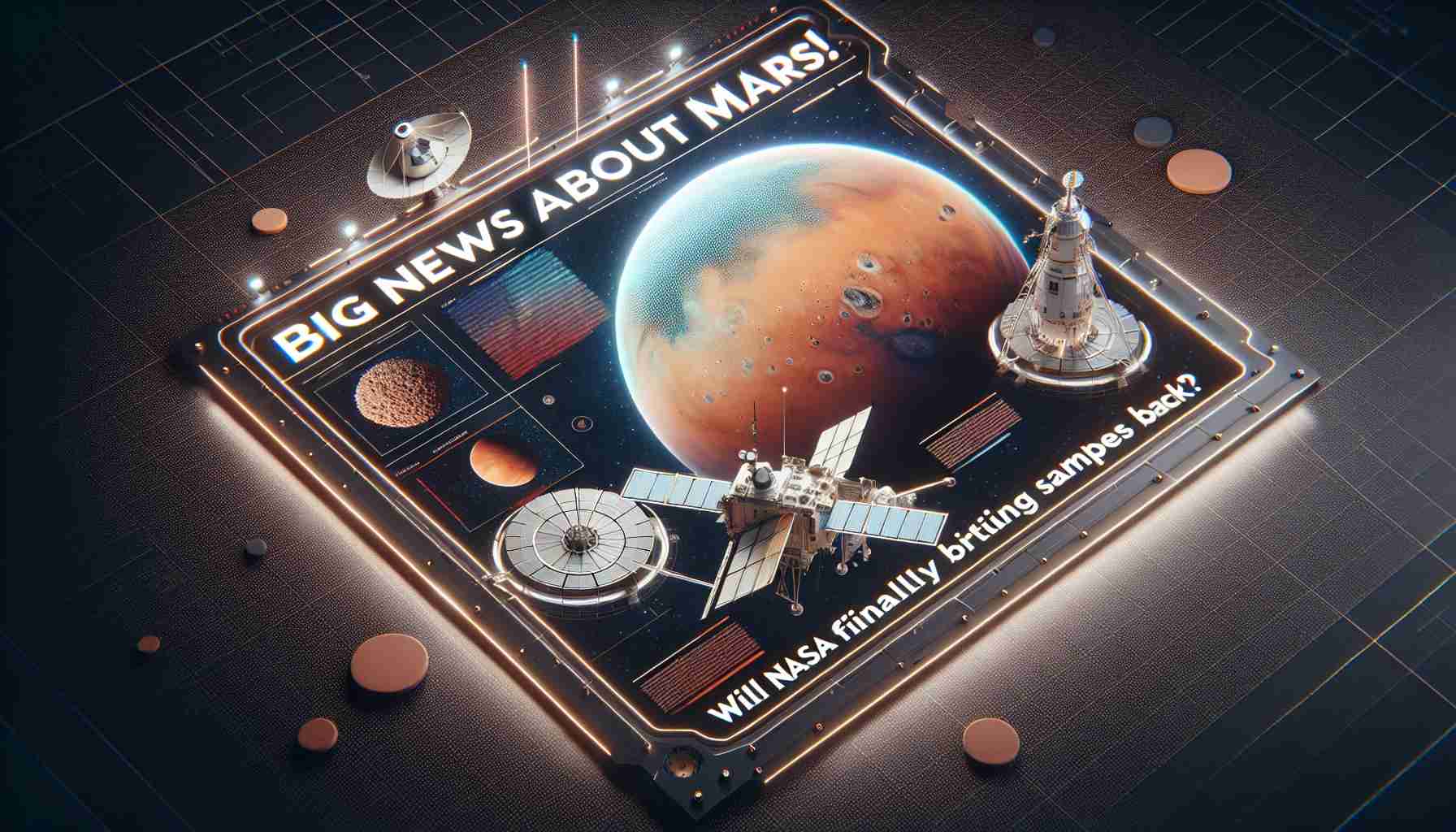The countdown to a major update from NASA has begun. On January 7, 2025, the space agency will hold an audio press conference to discuss the future of its ambitious Mars Sample Return program, set for 1:00 p.m. EST (1800 GMT).
Upcoming Press Conference Details
NASA Administrator Bill Nelson will lead the conversation, along with Nicky Fox from the science missions division. They aim to outline strategies aimed at reducing costs and risks while maintaining the program’s scientific ambitions. This landmark initiative has been a cornerstone of planetary exploration efforts for over twenty years, and it seeks to return samples collected from Mars back to Earth for analysis.
The Journey of Perseverance
Since landing on the Martian surface in 2021, the Perseverance rover has gathered diverse samples. However, the technical challenges involved in retrieving and returning these samples have been significant. The initial mission plan was complex, requiring multiple components including a Mars lander, a launching rocket, and European collaboration for transport back to Earth.
Reevaluating the Mission
The anticipated press conference will address soaring costs that have escalated from an initial $3 billion estimate to as high as $11 billion. With competition from nations like China, which plans its own Mars missions, NASA is under pressure to unveil a more efficient and cost-effective approach moving forward.
Stay tuned for updates from NASA’s website on January 7, as the future of Martian exploration hangs in the balance.
NASA’s Mars Sample Return Program: A New Era of Planetary Exploration Awaits
Upcoming Press Conference Details
NASA is set to provide crucial updates on its Mars Sample Return program at an audio press conference on January 7, 2025, at 1:00 p.m. EST (1800 GMT). Led by NASA Administrator Bill Nelson and Nicky Fox from the Science Missions Division, this conference promises to detail an innovative approach to the program aimed at minimizing costs and risks while achieving its scientific objectives.
This major initiative has been at the forefront of NASA’s planetary exploration efforts for over two decades, aiming to bring back samples collected from Mars for comprehensive analysis on Earth.
The Journey of Perseverance
Since its historic landing on Mars in February 2021, the Perseverance rover has made significant strides in collecting a variety of Martian rock and soil samples. However, the challenges of transporting these samples back to Earth are substantial. The original mission plan is complex, factoring in multiple components: a Mars lander to deploy the samples, a rocket to launch them, and essential collaboration with European partners for transport.
Reevaluating the Mission
The press conference is poised to address the increasing budgetary concerns associated with the project. Originally estimated at around $3 billion, the costs have surged, now anticipated to reach approximately $11 billion. This significant rise has been compounded by competitive pressures from international players like China, which is pursuing its own Mars exploration initiatives.
Key Features of the Mars Sample Return Program
– Scientific Ambition: The program’s primary goal is to return Martian soil and rock samples to Earth, enhancing our understanding of Martian geology and potential biosignatures.
– Collaborative Efforts: Involvement of international partners, particularly from Europe, is crucial for the mission’s success, showcasing a united approach to planetary exploration.
– Technological Innovations: Upcoming advancements in aerial robotics and sample retrieval mechanisms are expected to play a vital role in executing the program more efficiently.
Pros and Cons of the Program
Pros:
– Comprehensive analysis of Mars samples could provide insights into the planet’s history and the possibility of ancient life.
– The collaboration may strengthen international cooperation in space exploration.
Cons:
– High costs raise concerns about funding allocations among competing NASA missions.
– The complexity of the mission increases the risk of delays and technical failures.
Insights from the Mars Sample Return Project
Research from this mission may offer transformative insights into planetary science and geology. For example, studying Martian samples could reshape our understanding of climate patterns on Mars and its potential for supporting life.
Trends and Predictions
With the growing competition in space exploration, especially with emerging players like China, the Mars Sample Return program is likely to evolve. Predictions suggest a shift toward more budget-conscious planning and potentially accelerated timelines in response to international competition.
Conclusion
As the January press conference approaches, anticipation builds around NASA’s strategies for the Mars Sample Return program. This landmark initiative is not just about retrieving samples; it represents a key step in understanding our neighboring planet and the broader cosmos. For updates, visit NASA’s official page on this mission on NASA.



















